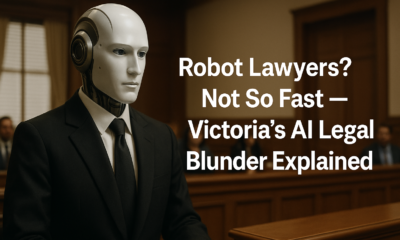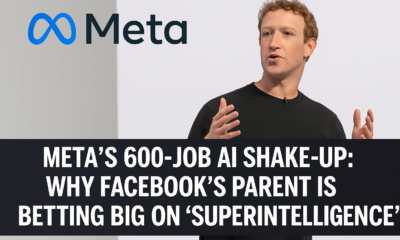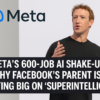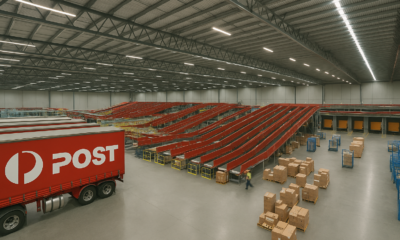Tech & Innovation
Artificial Intelligence: The Silent Force Reshaping Our Everyday Lives
For many people, the phrase “Artificial Intelligence” still sparks images of futuristic robots or scenes from Hollywood. Yet the truth is far more understated and far more profound. AI is not an abstract concept waiting in the wings. It is already embedded in the fabric of modern life, working quietly behind the scenes to shape decisions, deliver conveniences, and influence experiences without us consciously noticing.
Artificial Intelligence is no longer a specialised tool reserved for scientists and engineers. It is a silent force operating across homes, hospitals, retail platforms, workplaces and public spaces. Its impact is subtle but sweeping, often invisible yet increasingly indispensable.
This article explores how AI is reshaping daily life today, the opportunities it creates, the risks it raises, and why its influence will only deepen in the years ahead.
AI in the Home: Assistants That Learn From You
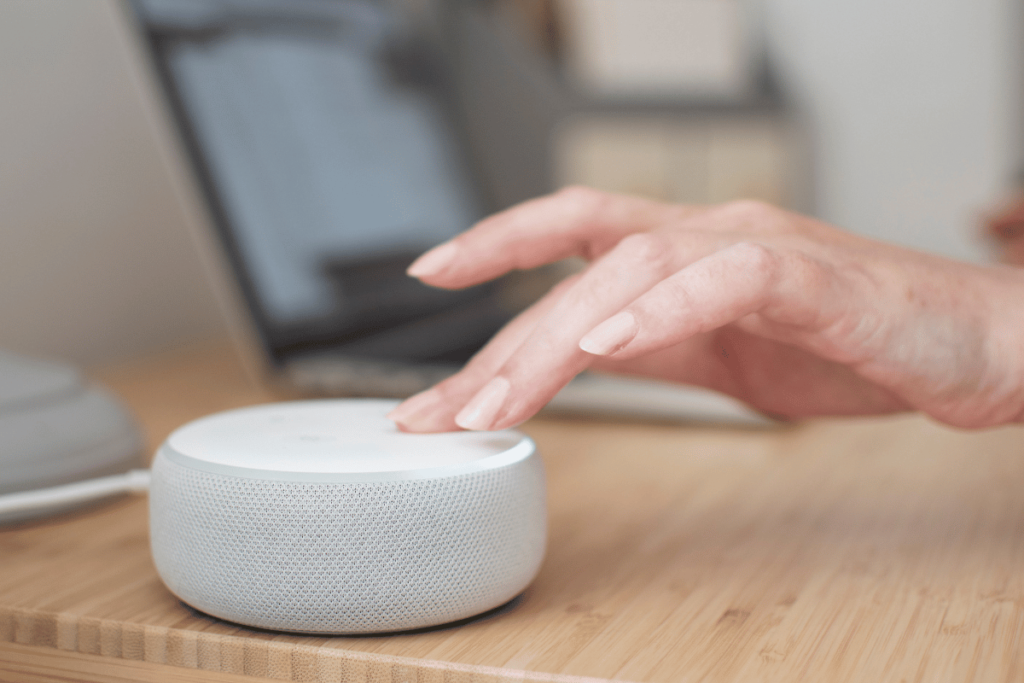
Virtual assistants such as Siri, Alexa and Google Assistant have evolved far beyond novelty gadgets. Smart home adoption is now widespread, with 7.6 million Australian households owning at least one smart home product, according to new research from Telsyte. These AI-enabled systems do far more than follow instructions — they learn.
Machine-learning models analyse everyday patterns, including:
- When you wake
- Your preferred room temperature
- Your evening routines
- How often you adjust appliances
- Your shopping preferences
Over time, these assistants begin to automate tasks without prompting. For the elderly or mobility-restricted, voice-controlled environments provide meaningful independence. For busy families, they function as real-time organisers, coordinating daily routines and simplifying household management.
AI in Shopping: Predictive Personalisation
Modern retail is built on predictive intelligence. Online stores use machine learning to interpret browsing patterns, clicks, dwell time, past purchases and even abandoned carts.
A report by McKinsey found that 35% of Amazon’s consumer purchases are driven by AI-powered recommendations — a staggering indicator of how influential personalised algorithms have become.
This technology now shapes customer experience across:
- Fashion
- Groceries
- Streaming
- Electronics
- Travel
- Subscriptions
AI doesn’t just “predict” what you want — it learns and evolves with your behaviour, often surfacing products before you even realise you need them.
AI in Health and Wellness: A Quiet Revolution
Few industries demonstrate AI’s value more clearly than healthcare.
Smartwatches and wearables have become portable health-monitoring devices. They track:
- Heart rhythms
- Oxygen saturation
- Sleep cycles
- Stress levels
- Movement patterns
These insights are powered by machine learning models that flag abnormalities in real time.
Inside medical settings, AI’s impact is even more profound. A 2020 study published in Nature Medicine found that AI systems were able to match or exceed human radiologists in breast cancer detection, reducing false positives and improving diagnostic speed.
Hospitals now use AI for:
- Analysing X-rays, MRIs and CT scans
- Predicting patient deterioration
- Guiding robotic-assisted surgeries
- Genomic analysis
- Triage support
AI enhances — not replaces — human clinicians by improving precision and freeing them to focus on complex care.
AI in Transportation: Smarter Journeys
Navigation systems today are powered by continuous streams of real-time data. Google Maps receives more than 20 million data contributions each day (such as user reports, satellite imagery updates and local business changes) and uses machine-learning models to predict traffic flows, road closures and route optimisation
AI-driven transport now includes:
- Dynamic route optimisation
- Live public transit updates
- Parking availability prediction
- Road hazard detection
The automotive industry is moving rapidly too. Companies like Waymo and Tesla have logged billions of autonomous driving kilometres, using AI to detect pedestrians, predict movement and perform real-time decision-making.
AI in Finance: The Quiet Guardian of Your Transactions
AI has become a backbone of modern financial systems, operating quietly in the background to keep transactions secure and personalised. Banks and payment platforms use machine-learning models to analyse millions of transactions in real time, identifying unusual activity and reducing false alarms.
AI now supports a wide range of financial functions, including:
- Fraud detection and risk monitoring
- Behaviour-based credit scoring
- Automated budgeting and spending insights
- Personalised banking recommendations
- AI-assisted investment and portfolio management
These systems have made financial services more accurate, more responsive and significantly more secure. For everyday consumers, AI now acts as an invisible financial adviser — safeguarding transactions while simplifying money management.
AI in Social Media: The Feed That Knows You
Every personalised feed on social media is shaped by AI. Platforms track how long users watch a video, which posts they save, what they comment on and who they follow. These signals help algorithms learn preferences and curate content accordingly.
AI influences social media experiences by:
- Ranking posts most likely to interest the user
- Recommending accounts, groups or videos
- Tailoring ads based on behaviour
- Filtering harmful or inappropriate content
- Detecting coordinated inauthentic behaviour
While this creates highly relevant content experiences, it also raises concerns about filter bubbles, misinformation and over-personalisation. The challenge for platforms is balancing user engagement with transparency and safety.
AI in Education: Learning That Adapts to You
AI has brought personalisation to digital learning environments. Instead of delivering the same material to everyone, AI-powered learning systems adapt in real time based on a student’s strengths, weaknesses and pace.
AI enhances the learning journey through:
- Adjusting difficulty levels based on performance
- Providing instant feedback and explanations
- Suggesting additional resources or exercises
- Allowing advanced learners to move ahead quickly
- Offering simplified content for those who need it
This adaptive approach mirrors one-on-one tutoring, helping improve retention and confidence. As digital learning expands, AI will play a central role in making education more accessible and personalised for all learners.
AI in Safety and Security: Watching Over the World
AI is increasingly used to strengthen public safety and emergency response systems. In many cities, advanced surveillance tools assist in identifying unusual activity or potential threats, allowing authorities to act faster and more precisely.
AI contributes to safety and security by:
- Analysing real-time camera feeds for anomalies
- Detecting unusual patterns in crowded areas
- Supporting law enforcement investigations
- Predicting natural disaster risks based on historical data
- Helping emergency agencies prepare for floods, bushfires or storms
However, these capabilities must be balanced with strong privacy safeguards and transparency. As AI becomes more embedded in safety systems, ethical governance will be essential to maintain public trust.
The New Era of AI: Cutting-Edge Developments
Recent breakthroughs in generative and conversational AI have pushed the boundaries of what machines can create. AI tools can now draft content, generate imagery, write code, summarise research and support customer service at scale.
Key areas transformed by next-generation AI include:
- Human-like chat and support experiences
- Automated content and creative production
- Voice and video synthesis
- Coding assistance and debugging
- Research acceleration and workflow automation
These innovations offer enormous potential but also carry risks including deepfake misuse, authenticity concerns and rapid information manipulation. As these tools evolve, responsible development and oversight will be critical.
The Risks and Responsibilities of AI
While AI offers major benefits, it also presents challenges that must be addressed thoughtfully. Bias in training data can lead to unfair outcomes. Automation can reshape job markets faster than workers can reskill. Generative models can produce misleading or harmful content.
The most significant areas requiring oversight include:
- Bias and fairness in algorithms
- Data privacy and protection
- Transparency in automated decision-making
- Deepfake and misinformation risks
- Ensuring humans remain in control of critical systems
The path forward requires responsible AI frameworks and collaboration between industry, government and communities to ensure the technology is used ethically and safely.
The Future: AI as an Invisible Operating System of Life
Artificial Intelligence is evolving into a foundational layer of modern environments — powering navigation, supporting safety, improving communication and coordinating daily routines. As AI becomes more embedded in homes, workplaces and public spaces, it will shift from a visible tool to a background system that quietly enables everyday life.
Future AI environments may include:
- Homes that anticipate routines
- Workflows that adjust to productivity patterns
- Vehicles that coordinate with infrastructure
- Public spaces that react to real-time conditions
- Devices that operate seamlessly together
The challenge is ensuring this progress is directed responsibly, with systems designed to support wellbeing, fairness and long-term societal benefit.
Conclusion: AI’s Growing, Invisible Influence
Artificial Intelligence has already become part of everyday infrastructure, influencing how we work, communicate, travel and learn. As its role expands further, guiding its development responsibly will be essential. The decisions made today will determine how AI shapes daily life — and the wider world — in the years ahead.
FAQs
What is Artificial Intelligence?
Artificial Intelligence refers to computer systems designed to perform tasks that typically require human intelligence. This includes recognising patterns, making predictions, understanding language, learning from data and solving problems. AI systems improve over time through machine learning, enabling them to adapt and become more accurate with experience.
How is Artificial Intelligence used in everyday life?
AI is embedded in many daily tools, from virtual assistants and smart home devices to navigation apps, social media feeds, online shopping recommendations and financial security systems.
Does AI replace human jobs?
AI can automate routine tasks, but most research shows it complements rather than replaces many roles. New jobs are also emerging in areas such as data, cybersecurity, automation and AI oversight.
Is AI safe to rely on?
AI is generally safe when developed responsibly, but it requires strong oversight to prevent issues such as bias, misinformation, data misuse and occasional AI hallucinations, where systems generate incorrect or misleading responses. Human judgement remains essential in high-stakes decisions.
How will AI impact homes in the future?
Smart homes will become more connected and intuitive, with appliances, security systems and energy management tools responding automatically to household behaviour and preferences.
Hi, I’m Ankush. Based in Port Lincoln, South Australia, I hold a Bachelor of Science and a Bachelor of Education (Middle & Secondary) from the University of South Australia, graduating in 2008. With several years of experience as a high school and secondary teacher, I’ve combined my passion for technology and finance to drive innovation in the on-demand service industry. As the founder of Orderoo, I’m committed to leveraging technology to simplify everyday tasks and enhance accessibility to essential services across Australia. My focus remains on exploring new opportunities to expand and improve these solutions, ensuring they meet the evolving needs of users and service providers alike.











